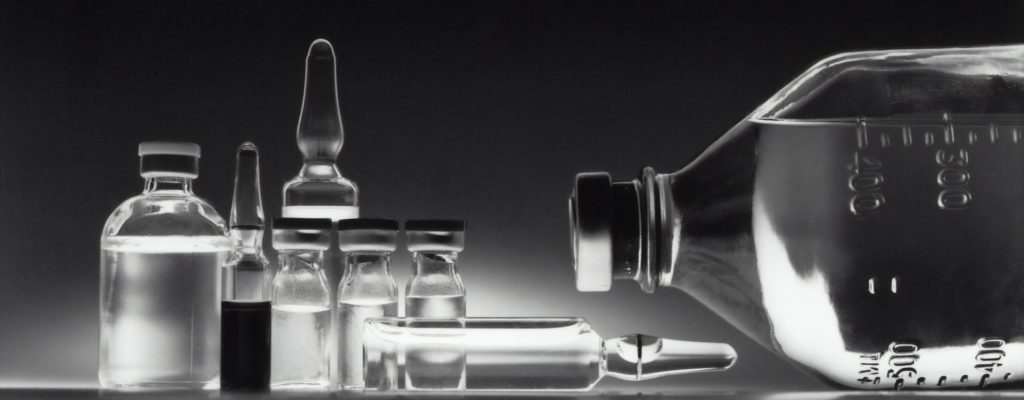Coping | Daily Life


Kelly receives her infusion while rocking a GWG shirt!
For those of us that treat our IBD with medications, there is a strong inevitability that at some point, we may need to switch drugs. Whether from non-response, loss of response, or intolerable side-effects or other reasons, trying a new medication feels like an IBD fact of life. I don’t think that it’s fair to us as patients to say that we “failed” a drug, though that is the most common term used in clinical practice. I like to think more that the drug failed us, a mutual parting of ways, a conscious uncoupling, a goodbye-so long-farewell to something that wasn’t serving our best interests.
I’ve recently been through a mutual breakup with Infliximab after my inflammatory markers started climbing despite being on a very high dose and a very short interval of infusions. As I became more severely symptomatic, my GI and I knew it was time to make a shift to a new medication. It’s not my first time switching drugs, but each one is an emotional process of grief, transition and resolution to move forward and get my guts healed again.
It’s such a difficult decision to move to a new drug. With biologic medications, like Humira (adalimumab) or Remicade (infliximab), once you stop taking them, your body will likely start developing antibodies to the medication. This means that it becomes very difficult and possibly dangerous to restart these drugs in the future, although recent research has shown that recapturing response to those drugs is possible.
I don’t like the idea of burning my bridges by stopping a biologic. There aren’t an enormous amount of biologics available for Crohn’s or UC at this time. And although pharmaceutical research is showing promise with some medications in research that could be helpful in the future, I don’t want to run through every available drug in a short time and have nothing left to take to manage my disease. I can only imagine how difficult these choices must have been 10 years ago, when the landscape of drugs available was much more limited.
It’s a scary decision to try something new with a significant potential side effect profile. And there’s no guarantee that a new medication will be more effective than the previous one. But this is one of those moments as a patient where courage and trust are critical. I trust my care team to help me build a plan to get me into remission and keep me there. And I have the courage to make this change. I can give myself grace and space to panic and grieve and be afraid of the change. And then I can move on to a new drug and a new me, with confidence that it’s the right choice for my body.
I started a new drug recently, Skyrizi, or rizankizumab. It’s only been recently approved for the treatment of Crohn’s Disease (June of 2022), however it’s been used to treat plaque psoriasis and psoriatic arthritis for 3 years. My GI felt that the drug could make it a good match for my body’s needs. And I was excited because it meant that eventually, I would be able to make the switch from infusions every 6 weeks, to home injections every 1-2 months.
Managing the transition between drugs has been difficult, however. I started a brief course of budesonide, a gentler steroid than prednisone, to manage the flare symptoms and to keep my inflammation low enough that the Skyrizi could take effect. Steroid use always causes side effects for me, such as insomnia, tachycardia and most miserably of all, yeast infections and thrush. I always try to keep in mind my changing personality on these drugs, and how it affects those around me. I find myself more impulsive, snippy and short tempered. My kids and spouse are infinitely patient souls, but I do know that I have to work harder every day to find peace and calm and productivity with steroids in my system.
One of the hardest parts of starting a new medication is hoping that it kicks in quickly. The reality is that different drugs have different intervals of when to expect a response, and some of them can range from weeks to many months. For Skyrizi, the data shows that it’s possible to have a response 4 weeks after the 1st induction infusion. However, it’s more likely that I’ll have to wait for 8 weeks to 12 weeks, which will be after my first home injection.
I tried tapering off of my budesonide at 6 weeks after my first infusion to see if the drug had started to kick in, and the immediate return of my severe flare symptoms was a clear indicator that it wasn’t time yet. But oh, being patient is so challenging! I’m lucky in this flare that the steroids are working so far to keep me from having an escalation of symptoms. It’s not always the case, as with my previous flares, but I’m giving thanks that I can still eat well and be active and sleep without too much urgency or pain or weight loss.
So, although the waiting is the hardest part, I’m consoling myself with the idea that I’ll be able to treat my disease at home in the future! I can even travel with my medication. It feels like the world is opening back up for me without my 6 week infusion tether. It is going to be so liberating to be able to sit at home in my comfy chair, with my cats purring nearby, a cup of hot tea at hand, and use my “on-body-injector” with its quick five minute injection. Change is coming, and I cannot wait.
Learn More!
